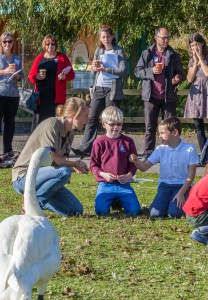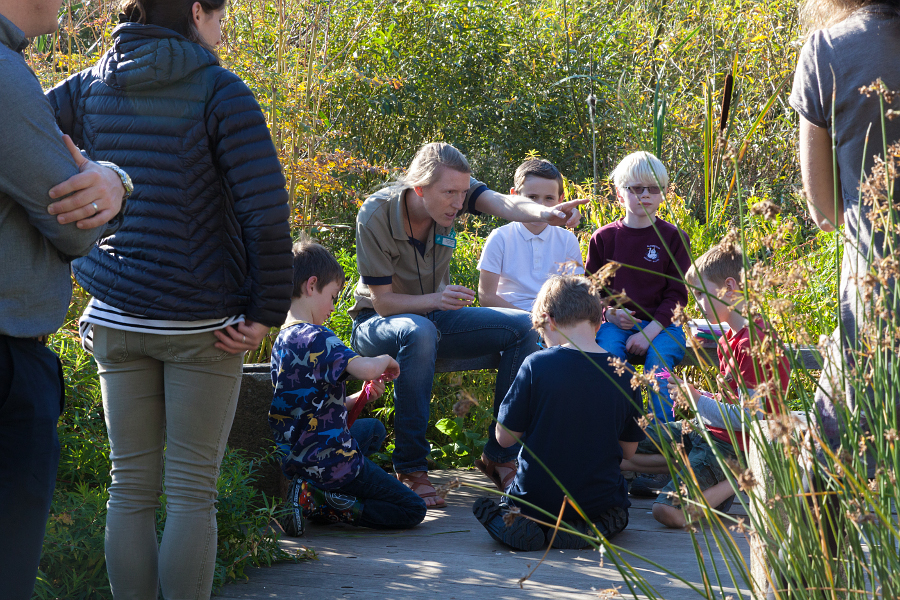Pupils start to benefit from outdoor learning forum

6,000 pupils in Gloucestershire have started to benefit from a new teacher forum set up by the Wildfowl & Wetlands Trust (WWT) which met last week and helps teachers to take learning outdoors.
WWT’s Slimbridge HQ has been a popular destination for school visits for almost 70 years. But a WWT survey of Gloucestershire teachers found huge differences in how often they took their pupils outdoors to learn during regular school lessons, despite all recognising the benefits for their students.
The WWT-led Learning in Nature initiative is helping teachers help each other increase their confidence and skills to teach a variety of subjects outdoors in their own school grounds, through a series of workshops like the one last week at which 80 teachers from 30 schools learnt from each other alongside staff at WWT and Lighting up Learning.
Already teachers are trying out the new techniques they’ve learned in their own schools. It is estimated that the project has already had an impact on 300 teachers and 6,000 pupils, through the teachers that are participating in Learning in Nature sharing ideas and inspiring their colleagues.
WWT’s Lucy Hellier said:
“It’s well known that learning outdoors has a really broad range of benefits for pupils. It doesn’t just teach them about nature, it builds confidence, improves behaviour and helps bring core curriculum subjects to life for pupils, particularly those that struggle in a traditional classroom environment.
“All the schools taking part in Learning in Nature share that conviction that pupils should learn outdoors often, not just once a year on a trip to Slimbridge.
“Some teachers are already doing the wonderful things that we all aspire to, such as teaching maths with leaves and building dens to teach physics. We saw that WWT had a role to bring everyone together so we can learn from each other, help each other overcome barriers and get inspired by the huge learning opportunities of the natural world.”
From WWT’s initial survey:
- At some schools only one teacher took their pupils outside to learn (excluding PE). At other schools, every teacher took lessons outside.
- Pupils at some schools never went outside to learn in nature. At one school, pupils learn outdoors for an average of 10 hours in summer and 5 hours in winter
- Three quarters of schools have a pond or other wetland area. Most of those do use it for outdoor learning.
- The main aspects of outdoor learning that teachers said were challenging were: lack of time (100%), uncertainty around how to link outdoor learning to the curriculum (93%), and lack of confidence to teach outdoors (80%).
- Schools were clear on the benefits of outdoor learning for their pupils: positive impact on their pupils’ enjoyment of lessons, engagement with learning, well being, and social skills (100%), positive impact on the quality of learning (93%), positive impact on behaviour (86%), positive impact on attainment (67%).
At last week’s meeting at Slimbridge teachers attended a mix of sessions from experts in different areas, such as how to teach maths outdoors and how to develop school grounds for learning. They watched demonstration lessons with pupils from Slimbridge primary school using the Slimbridge facilities, but with a strong emphasis on what can be recreated in school grounds.




